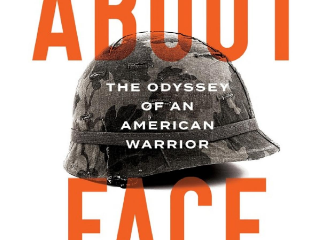The details in this blog post originated from a book written by William Manchester and Paul Reid titled The Last Lion: Winston Spencer Churchill, Defender of the Realm 1940 – 1965. I believe that the author created one an excellent summary of the remarkable life of Winston Churchill. I want to share the information here with you as I found it to be quite fascinating. I summarized the text as it was quite grand in scope. What follows is mostly quoted with some paraphrasing here and there for conciseness.
Early on a January day circa 1955, Jock Colville brought a minor matter of state to Churchill’s attention as the old man shaved. Churchill turned to Colville and said “today is the twenty-fourth of January. It is the day my father died. It is the day that I shall die too.” On January 24th, 1965, he did.
Only twice in the past 112 years had a non-Royal personage been honored by a state funeral. The Duke of Wellington in 1852 and Gladstone in 1898. Queen Victoria attended neither funeral but Queen Elizabeth II honored Churchill by her presence in St. Paul’s. She was joined by representatives of more than 110 nations; including 4 Kings, a Queen, 5 Heads of State and 16 Prime Ministers.
Churchill had spent his entire life creating an identity for himself from his own audacious imagination. Which as Oscar Wilde observed “was the best way to get through life, without suffering though it all.” Churchill made his dream a reality. He had imagined himself into Sir Winston Leonard Spencer Churchill, the greatest statesman of the 20th Century. He had fought the monster Hitler without himself becoming a monster. He had prevailed on his countrymen during his final year at Number 10 to build the hydrogen bomb in order to keep the Soviet dictators behind the Iron Curtin. Yet, by 1958 new ages and new generations such as the Atomic; the Space; the beat; the Rock and Roll; and, the Television had overtaken and bypassed Sir Winston. With no further role to play in history’s unfolding, he became a spectator.
When in early November 1895, twenty year old subaltern Winston Churchill disembarked the Cunard steamship at Trulia, the Hudson River pier and stepped foot for the first time in his mother’s native land, the United States of America. Horse-drawn Omnibuses plied the dusty macadam roads of New York City. The 9th Avenue and 3rd Avenue elevated railroads ran up the island and spewed glowing embers on hapless pedestrians below. But the first New York subway would not be operating for almost a decade. London was then ushering in it’s third decade of underground rail service between Paddington and King’s Cross. But young Churchill had not availed himself of this form of public transport, and would do so only once during the remainder of his life.
When Churchill first came to American shores, Henry Ford had yet to successfully propel his Quadracycle by means of a gasoline engine, and the Dodge brothers were still building bicycles in Ontario, Canada. So too in Sheffield, England was Thomas Humber whose armored motorcars Churchill relied on during the Blitz, though he would rarely actually operate one in his lifetime. Not because he was an aging Victorian man who did not understand the mechanics of automobiles, but because he was a Victorian man who believed it only proper that liveried drivers drove carriages, including motorized carriages.
Churchill was approaching early middle age when Orville Wright at Kittyhawk took aloft the spruce and wire flying machine that he his brother Wilbur had built. By then the earliest infernal contraptions built by Thomas Humber and Henry Ford were petrifying cows and horses, and old women on both sides of the Atlantic.
In the motorcar, Churchill saw the genesis of the tank. In the aeroplane, the fighter plane and the bomber. In the early decades of the 20th Century, he mused in magazine articles on the nature of rockets, atomic power and television. He analyzed the moral and political implications of every new technology brought forth in the first half of the 20th Century.
The Etruria, a Cunard line steamship, had carried sail on the 1895 voyage, lest it’s steam engines fail during the 10-day Atlantic crossing. Churchill departed his other country for the final time on April 14th, 1961, onboard a Pan American World Airways, Boeing 707, that pushed along by the Jetstream, 7 miles high, carried him home across the Atlantic at more than 500 miles per hour.
To conclude, Winston Churchill’s life stands as a testament to resilience, vision, and an unwavering sense of duty. From his early days navigating the streets of New York on foot to later crossing the Atlantic at jet speed, Churchill lived through some of the most transformative eras in modern history. He adapted to the changes of his time while shaping the course of history, particularly during the darkest days of World War II.
Churchill’s legacy transcends the titles and accolades he amassed throughout his life. His courage in the face of tyranny, his steadfast belief in the importance of freedom, and his ability to see beyond the immediate challenges of his time are what truly defined him. As we reflect on his remarkable life, it becomes clear that his influence did not end with his passing in 1965. The world he helped to save and the values he defended continue to shape our present and inspire future generations. Sir Winston Churchill will forever remain a symbol of steadfast leadership and a reminder that one person, with enough determination and vision, can indeed change the course of history.
Final thoughts…
Reading The Last Lion: Winston Spencer Churchill, Defender of the Realm 1940 – 1965 by William Manchester and Paul Reid was an incredible experience that brought Churchill’s remarkable life into vivid detail. The authors masterfully capture the complexities of Churchill’s character and the enormity of his contributions to the world. Their thorough research and compelling storytelling make it more than just a historical account—it feels like you’re walking alongside Churchill through some of the most pivotal moments of the 20th century. I highly recommend this book to anyone fascinated by history, leadership, or the enduring impact of one extraordinary individual on the world.
That’s all for today folks! Please comment. I love to hear from my readers. Thanks again for coming along for this ride, you make my work worthwhile.


0 Comments